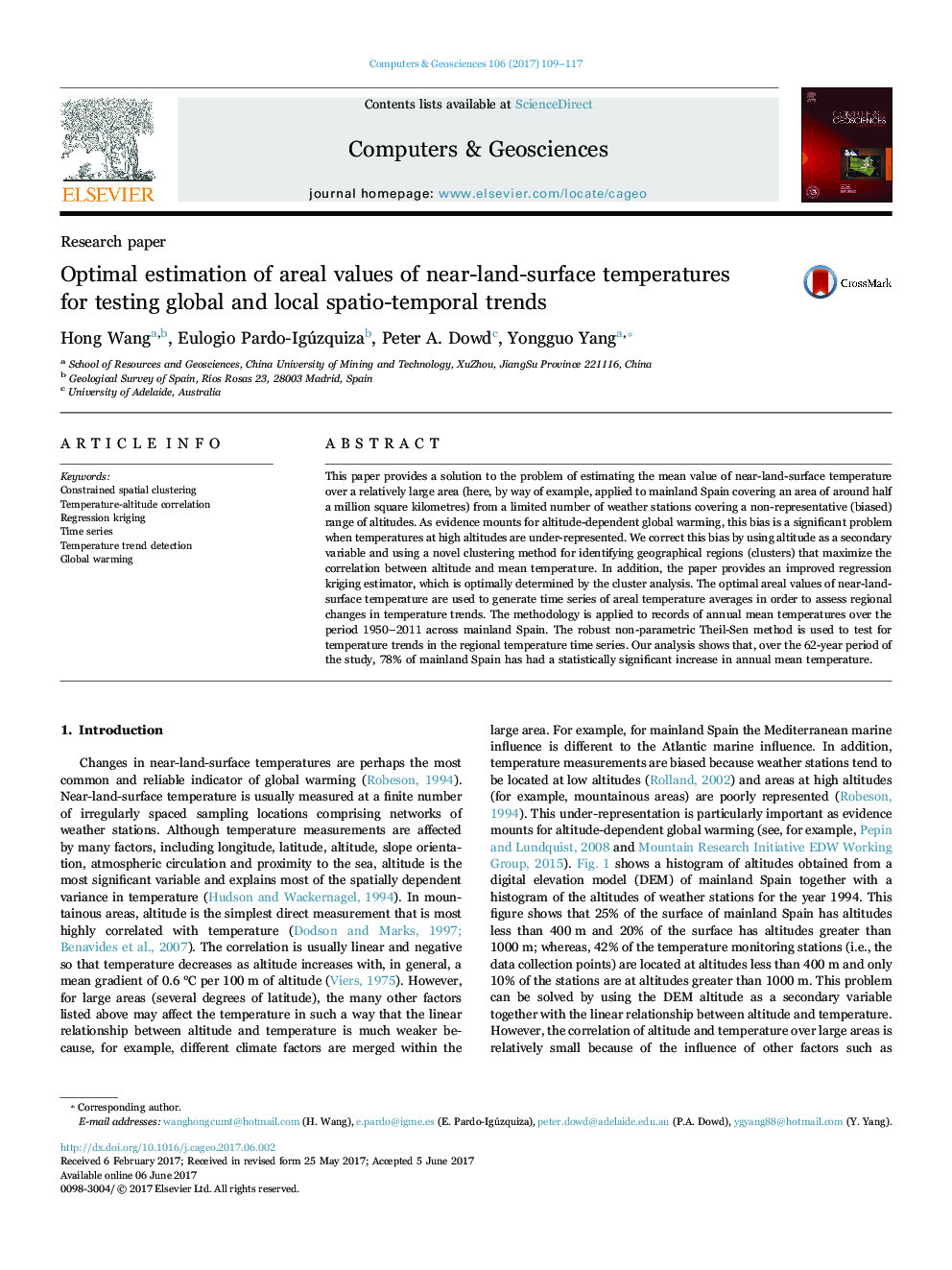| Article ID | Journal | Published Year | Pages | File Type |
|---|---|---|---|---|
| 4965315 | Computers & Geosciences | 2017 | 9 Pages |
Abstract
This paper provides a solution to the problem of estimating the mean value of near-land-surface temperature over a relatively large area (here, by way of example, applied to mainland Spain covering an area of around half a million square kilometres) from a limited number of weather stations covering a non-representative (biased) range of altitudes. As evidence mounts for altitude-dependent global warming, this bias is a significant problem when temperatures at high altitudes are under-represented. We correct this bias by using altitude as a secondary variable and using a novel clustering method for identifying geographical regions (clusters) that maximize the correlation between altitude and mean temperature. In addition, the paper provides an improved regression kriging estimator, which is optimally determined by the cluster analysis. The optimal areal values of near-land-surface temperature are used to generate time series of areal temperature averages in order to assess regional changes in temperature trends. The methodology is applied to records of annual mean temperatures over the period 1950-2011 across mainland Spain. The robust non-parametric Theil-Sen method is used to test for temperature trends in the regional temperature time series. Our analysis shows that, over the 62-year period of the study, 78% of mainland Spain has had a statistically significant increase in annual mean temperature.
Related Topics
Physical Sciences and Engineering
Computer Science
Computer Science Applications
Authors
Hong Wang, Eulogio Pardo-Igúzquiza, Peter A. Dowd, Yongguo Yang,
